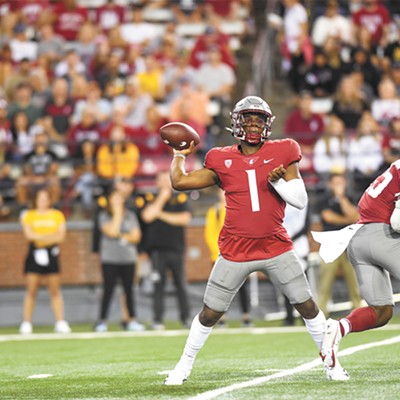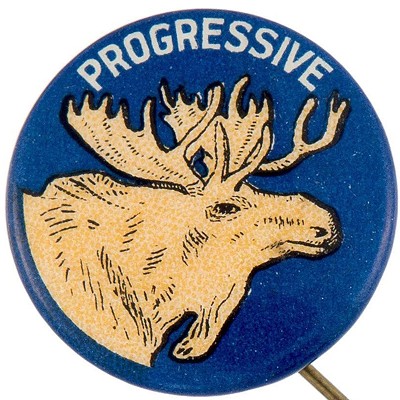
In 2010, I was a broke, pregnant grad student with a toddler who never stopped moving or talking. My husband worked swing shift, and I hated being stuck in the house. So I decided one night to pack up my 2-year-old, Henry, and go to an Idaho Vandals women's basketball game.
It wasn't relaxing, exactly. But it was something different, and because I was a student, it was free. I found an empty stretch of bleachers where Henry could zoom around, and I bought M&Ms to dole out to him at each time-out. He zonked out when we got home, and I decided to go to another game.
After my younger son, Danny, was born, I strapped him in a baby carrier and caught a few more games. When the Vandal women won the regular season Western Athletic Conference title in 2013, we were cheering from the stands.
When Danny was a toddler, if you asked him to name his favorite athlete, he'd scream, "ALI FOOOOOOOORDE!" like a tiny announcer. (Forde was one of the players who carried Idaho to more WAC and Big Sky titles.)
As my kids got older and required fewer bribes to get through a game, I realized I just plain enjoyed the sport — and the two glorious hours of turning off my anxieties and not thinking about anything but basketball.
I hadn't really been into watching sports since I was a kid (RIP Seattle Supersonics). I'm absolutely terrible at playing basketball. But when I bought my first season tickets, the deal was sealed: I was a women's basketball fan.
It wasn't hard to notice that it was kind of an odd thing to be. I never had a hard time finding empty stands where my kids wouldn't bother anyone. When we went to men's games, it was glaringly obvious how much bigger the crowds were.
This isn't just an Idaho problem. So what's the deal?
My friend Cara Hawkins-Jedlicka, who studies women's sports in the media at Washington State University, puts it well: "The easy answer is misogyny. But that's also the hard answer."
Like so many things, the deeper answer involves a ton of intertwined factors — and some self-reinforcing systems.
People can't watch games if they can't find them. The past few years' NCAA women's tournaments have set viewership records in large part because the games are actually on TV, on common channels. That's a pretty new thing.
People also need to hear about games. Research shows that colleges spend more money on average promoting men's teams than women's. A 2023 ESPN analysis uncovered that "an overwhelming majority of Power 5 athletic departments tweeted more about men's teams than women's."
Media coverage plays a role, too. I used to share a glaring example with my journalism students: One of our local newspapers divides their online content into "Gonzaga Basketball" and "Gonzaga Women's Basketball." As if one is the real thing, and one needs a qualifier.
If you've noticed more women's basketball stories in general in the past couple years, it's not an accident. Cara cites two big changes in 2022: The NCAA women's tournament was finally allowed to use the "March Madness" branding, and more women athletes took control of their own brand through the change in NCAA name, image and likeness (NIL) rules.
"The storylines have always been there, the players have always been there, but it wasn't getting attention," Cara says. "The talent has always been there, but it wasn't getting attention because it wasn't easy to find."
Promotion and coverage matter. People only have so much attention to give, and we tend to give it to things that are familiar and accessible.
Our habits, in turn, shape perception: "No one watches women's sports because you don't hear about them or know where to watch them" morphs into "No one watches women's sports."
But if you were one of the 18.9 million people who watched the women's NCAA title game on April 7 — like Cara and I did with a group of our friends in a bar that was showing the game, right there on ESPN — you saw a different slogan on T-shirts in the stands: "Everyone Watches Women's Sports."
So now, all 18.9 million of us need to live up to that.
In the Inland Northwest, we're surrounded by universities with women athletes who need your support. Not really into basketball? Choose another sport. Watch the games on TV or streaming. If they're not available, tell the universities, TV networks and streaming services you want to see them. Ask your local media to cover women's sports equally to men's. If you're close enough to show up to events in person, show up. Buy season tickets if you can. If you have kids, take them along — and encourage them to cheer for their schoolmates in youth and high school girls' sports, too.
For my own part, I'm determined to expand my fandom. A friend who lives out of town and I decided that we're going to turn women's basketball into a way to stay connected, and we picked NCAA and WNBA teams to follow together. (WNBA League Pass is only $35 a year!) Our big goal is to catch a Seattle Storm game in person.
And, of course, I'll be back in the ICCU Arena this winter to watch the Idaho Vandals, my favorite team, no matter the score or season. Maybe I'll see you there. ♦
Tara Roberts is a writer who lives in Moscow with her husband and sons. Her novel Wild and Distant Seas was published in January. Follow her on Twitter and Instagram @tarabethidaho.




















